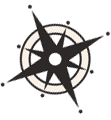Taking care of our coasts isn’t just beneficial to our ecosystems, it also supports our local economy. Coastal and marine economies are comprised of various sectors, including living resources, marine transportation, recreation and tourism, among others. The resources included in this topic help practitioners understand how to measure and communicate the economic impact of coastal health and management.
Understanding Coastal Economics

This document provides technical assistance to coastal management professionals addressing complex human-based problems. It reviews various economic tools used to valuate coastal resources as well as providing three brief case studies.
Methodologies for Valuation

A Guide to the Measurement of the Market Data for the Ocean and Coastal Economy in the National Ocean Economics Program Job growth
National Ocean Economics Program
This paper supplements reports and data released on the Coastal and Ocean Economies of the United States by the NOEP. It provides a discussion of the relevant literature involved in the investigation of the Ocean and Coastal related Economies, the theoretical background of measures such as gross domestic product (GDP) and gross state product (GSP), and provides details on sources, methods, assumptions, and limitations of the data provided by NOEP.

This table can be used to identify the right methods to use when conducting a benefit-cost analysis or estimating benefits alone.

Input-output analysis estimates how increased spending or employment ripples through the economy of a defined geographic area. This guide covers when to consider it, how to use it, strengths and challenges of the method, and links to additional resources.

Cost-effectiveness analysis is an economic method used to compare the costs associated with multiple projects that provide similar benefits. This guide covers when to consider it, how to use it, strengths and challenges of the method, and links to additional resources.

Regional economic accounting is a methodology that tallies economic indicators such as number of businesses (establishments), number of employees, gross domestic product, and other economic metrics for a particular geographic region. This guide covers when to consider it, how to use it, strengths and challenges of the method, and links to additional resources.

This method seeks to estimate nonmarket values using stated preferences, with respondents stating their choices in a statistically designed survey. This guide covers when to consider it, how to use it, strengths and challenges of the method, and links to additional resources.
Looking at the Data

This tool allows exploration of six sectors of the ocean and Great Lakes economy. You can find coastal economic profiles for every coastal county in Wisconsin, including data on employment, GDP, wages, and more.

This tool provides extensive data on demographics and economics, filtered by selecting the data type, geography, and time period of interest. Additionally, commonly used data sets are provided, including data on the ocean and Great Lakes economy, the total economy of coastal areas, American Community Survey, and Demographic Trends data sets.

This report is an analysis of 2018 economic data showing that over 1.3 million jobs are directly connected to the Great Lakes states, generating $82 billion in wages, with 139,490 jobs added within the time frame of the report.
Case Studies

Assessing the Investment: The Economic Impact of the Great Lakes Restoration Initiative
Great Lakes Commission
This group of case studies detail the economic impact of the Great Lakes Research Institute’s funding between 2010 and 2016 on the regional economy. The case studies showed that GLRI leads to significant new real estate and commercial development, a resurgence in traditional and new water-based recreation, improved quality of life, and increases in the number of young people who are choosing to stay in or relocate to Great Lakes communities.

The Michigan Sea Grant page on Great Lakes economy offers a solid foundation of statistics, case studies, methodologies, and organizations to help spread awareness and understanding of the economic powerhouse that is the Great Lakes economy.
